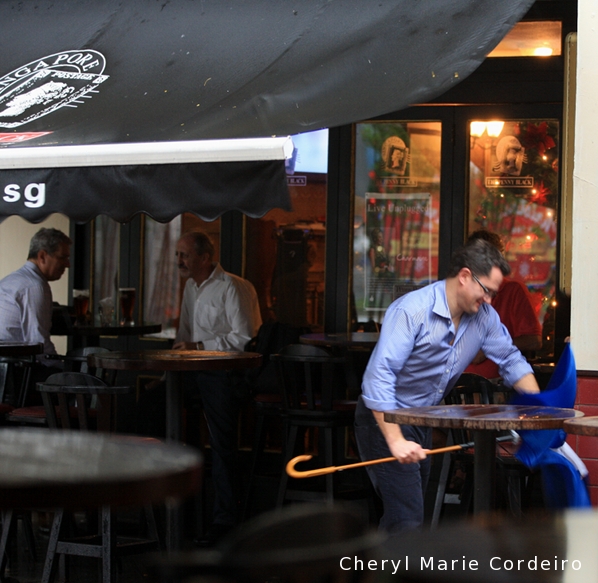Raffles Place, Singapore.
Text & Photo © JE Nilsson, CM Cordeiro 2013
A number of years ago, I decided to focus my doctoral thesis on cross-cultural leadership in Swedish led organizations in Singapore. The idea was to identify elements of the Swedish management style and how this in that case would work out in Asian organizations. The study led to numerous interesting observations of which a selection of ideas were developed into my thesis.
For some time now I have come to look into Sweden’s positioning within the European Union (EU), and in a comparative study, Singapore’s positioning within the Association of Southeast-Asian Nations (ASEAN).
The issue of Sweden’s overall positioning towards European integration has been much considered and debated in the Swedish political arena and by interested members in academia.

Studying modern business architecture in Singapore’s Central Business District, in 2013.
“Sweden: the Twin Faces of a Euro-Outsider”
In an article that appeared in the peer reviewed Journal of European Integration entitled “Sweden: the Twin Faces of a Euro-Outsider” in 2005, authors Rutger Lindahl and Daniel Naurin, postulated that Sweden, about ten years after full accession and a few years after the public rejection of Swedish proposed membership of the Euro currency in a referendum in 2003, had developed ‘twin faces’ as regards to their participation in European integration (Miles 2011).
Duo-levelled positioning
The authors explicitly outlined Sweden’s duo-levelled positioning towards issues of European integration, that was (i) the internal / domestic establishing of a firm national position towards the EU in general, which proved a challenge for the Swedish government, due to a general skeptical Swedish public who were wary of the implications of further European integration, and (ii) the external / regional (thus international) politics of positioning Sweden’s ‘euro-outsider’ status within the EU, where Sweden would want to be perceived as a country pursuing a ‘mixed’ policy portfolio.
The general skepticism towards deeper European integration from the Swedish public distinctly constrained the movements of the Swedish government. Further intra- and inter-political party division, also meant that a consensus across the Swedish party system regarding participation in the euro remained elusive.
But in brief, the ‘twin-faces’ of Sweden, its duo-levelled strategy of state governance and maneuvering of its internal, largely euro-skeptical political arena, was not to be confused with its primarily pro-EU yet anti-euro, external positioning towards the EU (Lindahl and Naurin 2005:66).
Two broad strategies
In reconciling and managing Sweden’s anti-euro, but pro-EU position, the Swedish government apparently followed two broad strategies.
The first was to adopt the politics of low visibility, where Swedish officials engaged in quiet networking with a ‘best in class’ behavior in Brussels combined with a low degree of Europeanization of the domestic political debate.
The second was to advocate conscious outsidership as regards to the euro, combined with a determined effort to be an ‘insider’ in EU decision-making. These strategies were managed in large by putting as priority, the country’s EU membership status in both elite/public discourse whilst backgrounding (playing down), to a limited extent, the question of Swedish euro-adoption, so that it would give time for the majority of the Swedes to come to terms with the country’s pro-EU position.
Continue reading “The strategy of ‘Twin Faces’ in state governance and positioning”























